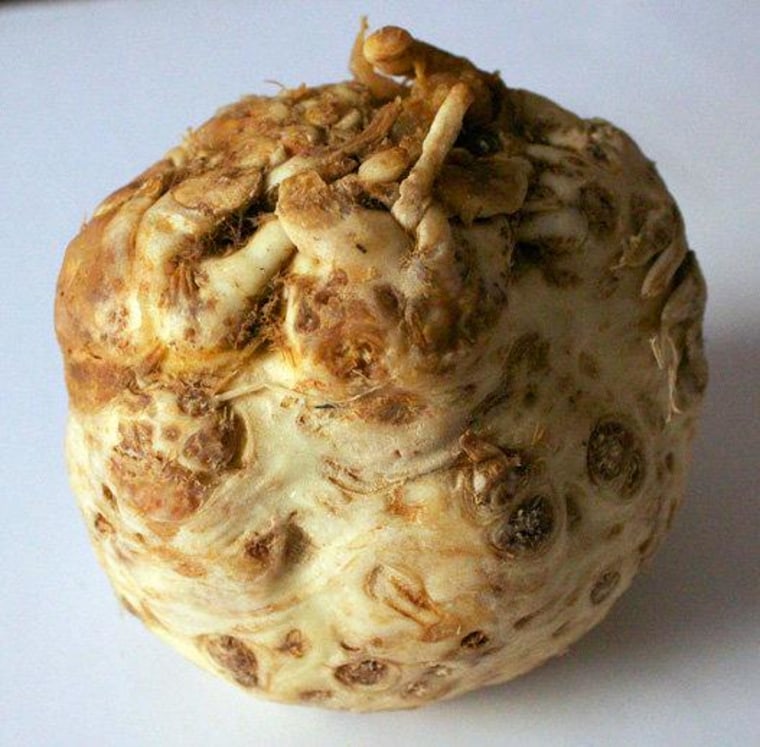If it's true that you eat with your eyes first, then some of the most delicious veggies on earth would probably never get consumed.
It may be happening in Sweden, where last week, the Swedish Board of Agriculture released a report that the country has a habit of discarding produce they deem “unattractive” before they even hit the produce aisle. Carrots, with their tendency to be crooked or irregularly sized, are taken to the trash most frequently — along with all of the vitamins and nutrients they contain. (Somewhere, Bugs Bunny is weeping.)
The news got us thinking about what other tasty treats would be given the boot by the Swedes simply because they aren’t pretty enough. But these five fruits and veggies make up for in taste and nutrition what they lack in looks.
Beets. Their bulbous appearance and spindly tips don’t exactly scream “yummy” and their red flesh has a habit of staining fingers and cutting boards, but a perfectly roasted beet is one of the most delectable vegetables in the produce section. Not only are they full of folate and potassium but their greens are also edible and high in calcium, beta-carotene and vitamin C. To roast a beet, gently scrub their exterior, but don’t remove the skin. Cut the greens off, leaving about ¼ inch of the stem, wrap the beets in a foil pouch and roast for 45-60 minutes at 450 degrees, or until the beets are fork tender. Let cool slightly, peel off their skin and slice.
Romanesco broccoli. A cousin of cauliflower, this bright green vegetable looks like something you might find in outer space or on the bottom of the ocean floor. (Hidden Valley even named it as a finalist in their Love Your Veggies program). Cut it into florets and steam or boil it, much the same way you’d do with cauliflower or broccoli. Drizzle with olive oil, garlic, salt and pepper for a savory side dish.
Morels. They may look like a loofah used to exfoliate dead skin cells, but morels, a member of the mushroom family, have a tendency to make foodies swoon. Part of their allure is finding them — they’re often hunted by enthusiasts and can usually be found in wooded areas next to elm, sycamore, maple and willow trees. Dip them in flour and lightly fry for a delicious treat.
Celery Root. It’s definitely not pretty, with its gnarled appearance, but celery root, also known as celeriac, is not only full of lots of good stuff like vitamin K, calcium, and iron, it’s also a delicious addition to soup. Click here for an easy recipe that plays up celeriac’s simple flavor.
Ugli fruit. This citrus hybrid certainly lives up to its name — it often looks like a wrinkly, bruised orange that’s been left on the shelf too long. But the Ugli, a tangelo that’s a cross between a grapefruit, orange and a tangerine makes up for its unsightliness with its juicy sweet flavor. Peel them and eat them like an orange, or cut them in half and scoop them out like a grapefruit.
Get more tips and recipes for seasonal eats at Made By Michelle.
What's that vegetable? The curly garlic scape
Scott Conant shares a refreshing summer tomato salad
